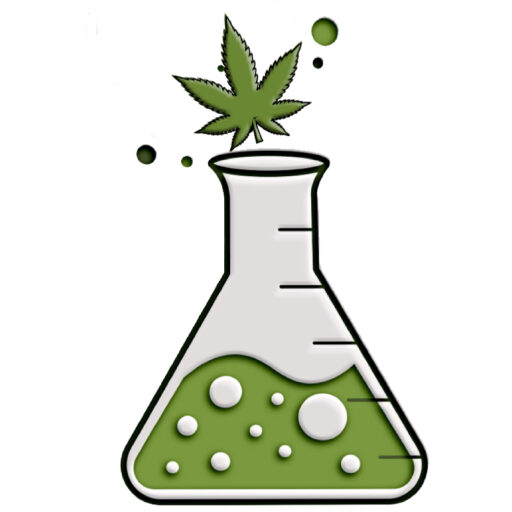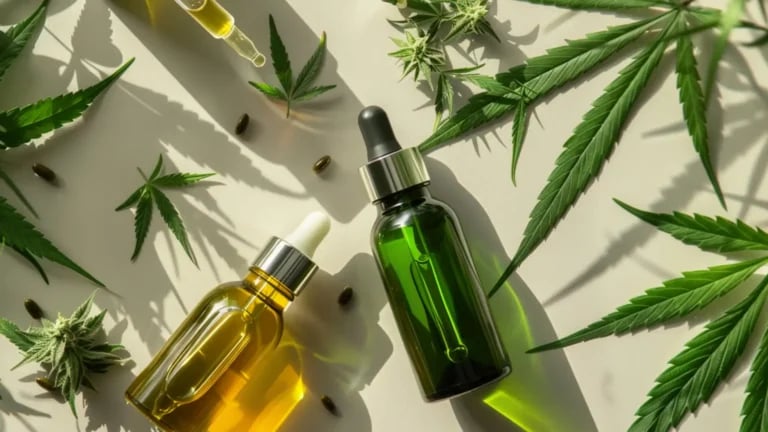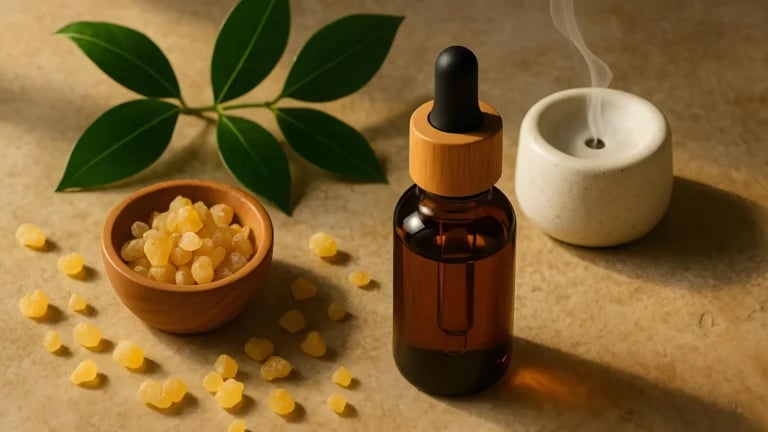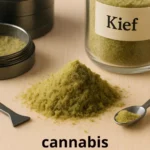Kief is the build-up of small, crystal-like structures on the cannabis flower. These structures hold most of the plant’s cannabinoids and terpenes. Often referred to as cannabinoid fairy dust in the cannabis community, it is a highly potent part of the marijuana plant.
Table of Contents
The appeal lies in its potency and the purity of the experience it provides. It is a favourite among seasoned marijuana enthusiasts seeking a more intense effect without additional plant material. My aim is to demystify this cannabis fairy dust and share the many ways it can elevate the cannabis experience, offering a direct route to the plant’s most potent properties.
Understanding Kief
The profile of kief is typically high in THC, the psychoactive compound in cannabis responsible for its signature high. However, the precise levels of THC and Cannabidiol can vary based on the strain of cannabis and the conditions in which it was grown. THC levels in kief can often exceed 50%, making it significantly more potent than the flower itself. Kief is a great choice when making 420 Firecrackers as it uses up the leftovers.
THC Levels
THC is the primary trippy component in cannabis. Technically, it is THCa which is the inactive form. Once it has been decarboxylated, it transforms into THC. The concentration in kief varies significantly based on the strain of cannabis it comes from. On average, kief can contain approximately 20% to 60% THC, which is substantially higher than the 10% to 25% usually found in the cannabis buds themselves. This shows that a smaller amount of kief is needed to achieve desired effects.
CBD and Other Cannabinoids
Cannabinoids like CBD, CBN, and CBG are also present in kief, albeit in lower concentrations compared to THC. While Cannabidiol is known for its therapeutic qualities without trippy effects, CBN may contribute to sedative properties, and CBG is being researched for its potential medical benefits. Kief’s cannabinoid profile can vary, but typically, the Cannabidiol levels are below 5%. This makes kief more sought-after for potent, THC-focused experiences rather than for higher Cannabidiol benefits.
Harvesting Kief
Many people have mistakenly though that the fine powder left over after grinding cannabis, was indeed, leftovers. Far from it! However, I will fess up and say that I don’t keep the kief from each cannabis variety separate. I mix all the different kiefs together, so some varieties will be higher in Tetrahydrocannabinol than Cannabidiol, whereas other varieties I use will be high in Caryophyllene. This gives me a completely unique blend that I love, and it varies a little more every time I add some more kief. Don’t forget though, that it still needs to be decarboxylated before it is used.
There are three effective methods for harvesting kief: manual collection, using grinders, and dry sifting methods.
Manual Collection
This uses a series of fine mesh screens to separate the trichomes from the rest of the cannabis plant material. The process involves:
- Preparation: Ensure the cannabis is dry, as moisture can reduce the yield of kief.
- Separation: Gently rub the cannabis flowers over the mesh screens, which allows the trichomes to fall through while retaining the larger plant material.
- Collection: Below the screens, place a clean, flat surface to catch the cannabis fairy dust.
Using Grinders
A more convenient method involves the use of a three-chamber herb grinder:
- Grinding: I place the cannabis buds in the grinder’s top chamber and grind them. This action not only grinds the buds but also knocks trichomes off.
- Collecting: The middle chamber catches the ground cannabis, while the fine screen at its base allows loose trichomes to fall into the bottom chamber.
This is my preferred method and by regularly grinding my cannabis buds, I passively accumulate a significant amount of kief in the bottom chamber over time.
Dry Sifting Methods
Dry sifting is a more industrial approach for larger quantities:
- Equipment: This utilises sifting screens with varying micron sizes.
- Sifting: Spread the cannabis over the top screen and agitate it. This causes the trichomes to separate and sift through the screens.
- Grading: Kief of varying grades can be obtained by using screens in sequence, separating finer particles with each step.

Consumption Methods
I have found several effective ways to consume kief, with each method bringing out a unique aspect of its potency and flavour profile. Here are the most common techniques.
Sprinkling on Flower
I find that one of the simplest ways to use kief is by sprinkling it over ground cannabis flower. This can significantly enhance the strength of a joint, bowl, or bong hit. To employ this method:
- Prepare your cannabis as usual.
- Lightly sprinkle a layer of kief on top.
- Enjoy the amplified effects.
Hash Making
Kief is also the primary ingredient in making hash. With pressure and heat, I compress kief to create a solid, concentrated mass. Here’s a basic rundown:
- Collect your kief in a pile.
- Wrap it in parchment paper.
- Apply heat and pressure (a hair straightener works well for small quantities).
Infusions and Edibles
Finally, kief can be infused into various fats to cook edibles or prepare potent infusions. I always remember to decarboxylate kief before using it to activate the cannabinoids effectively.
- Put the fairy dust into the POT by NOIDS glass chamber and select the THC decarb setting.
- When it is finished, add butter, oil, or other fats like ghee and select the oil infusion setting.
- Strain the mixture through the POT by NOIDS strainer to get beautifully “bit free” results.
- Use to make edibles or spread onto crackers or toast. I also like to add some to pasta sauces.

You can read more about the amazing POT by NOIDS in this blog A Review Of The POT by NOIDS Herbal Infuser
Benefits and Effects
Kief, rich in cannabinoids and terpenes, is known for its versatility and potency. It can be used medicinally or recreationally, and due to its concentrated nature, the effects are pronounced.
Medical Applications
I find kief particularly beneficial when I need relief from pain, as it contains a high concentration of cannabinoids like Tetrahydrocannabinol and Cannabidiol, which interact with the body’s endocannabinoid system. A brief list outlines its therapeutic uses:
- Pain relief: Chronic pain sufferers report significant easing of their symptoms.
- Mental health: Kief may also aid in managing symptoms of anxiety and depression.
- Appetite stimulation: Especially useful for individuals with eating disorders or those undergoing treatments like chemotherapy.
- Anti-inflammatory: It possesses anti-inflammatory properties, which can be helpful in conditions like arthritis.
Recreational Use
For recreational users, kief provides a more intense experience compared to traditional cannabis flowers due to its higher THC levels. Here’s what to expect:
- Potency: A small amount is often enough to achieve the desired euphoric effects.
- Versatility: It can be sprinkled over cannabis flower, vaporized, or used to make edibles, offering various methods of consumption.
Side Effects
As with any potent cannabis product, there are potential side effects that I must highlight:
- Dosage sensitivity: Overconsumption can lead to discomfort such as anxiety or paranoia. Keepa small bottle of Cannabidiol extract in your fridge. If you have overdone it the dose, a few drops or sprays of Cannabidiol directly under your tongue will help bring you back quickly.
- Impairment: It may affect motor skills, so users should not drive or operate heavy machinery after use.
- Dryness: Users might experience dry mouth or eyes, which are common effects of concentrated cannabis products. Remember to drink water!
Storage and Handling
In my experience, the key to maintaining kief’s quality is proper storage and handling. This ensures that the kief retains its potency and is not compromised by contaminants.
Preserving Potency
To maintain the strength of kief, storage is paramount. I recommend keeping kief in a cool, dark place to prevent the degradation of cannabinoids and terpenes. Air-tight containers made of glass or metal are optimal for retaining freshness, as they limit exposure to oxygen. Humidity control is also vital; a humidity pack can sustain an ideal relative humidity of 58% – 62%, which is crucial for conserving the potency.
*As an Amazon Associate, I earn from qualifying purchases.
Preventing Contamination
When it comes to handling, cleanliness cannot be overstated. I wear nitrile gloves to avoid introducing contaminants such as oils and dirt from the skin. Tools used for handling kief, like scoops or tweezers, are sterilised regularly with alcohol to prevent the introduction of external microorganisms.
Conclusion
We’ve gone through the essence of kief, a potent form of cannabis that offers a concentrated experience. Through understanding its texture, potency, and versatile applications, you can see that kief is a valued component of the cannabis plant.
Incorporating kief can be as straightforward or as intricate as one desires, with opportunities to experiment from a culinary perspective or to enhance the potency of traditional flower usage. Yet, I emphasise strongly the importance of starting with small amounts to gauge personal sensitivity. Remember that it is more potent than your usual bud!
FAQ
What is kief?
Kief is the fine, powdery resin that collects from cannabis flowers. It’s rich in cannabinoids and often called “cannabis fairy dust.”
How do you collect kief?
Kief is usually gathered with a three-part grinder or by sifting dried cannabis through a fine mesh to separate the trichomes.
Is kief stronger than regular cannabis?
Yes, kief contains a much higher concentration of THC compared to standard cannabis flower.
What can you do with kief?
You can sprinkle kief onto a joint, blunt, or bowl, press it into hash, add it to edibles, or use it to make cannabis concentrates.
Do you need to decarboxylate kief for edibles?
Yes, decarboxylating kief before using it in edibles activates the THC.
How should you store kief?
Keep kief in an airtight container, away from light and heat, to maintain its potency and freshness.
Is kief safe to use?
Kief is safe for most adults when used responsibly, but it is very potent, so start with small amounts.
What does kief taste and smell like?
Kief usually has a strong, concentrated aroma and flavour that reflects the cannabis strain it came from.

If you liked this blog post, I would love it if you shared it with a friend.
If you use Pinterest, please pin this post.
*As a POT by NOIDS affiliate, I earn from qualifying purchases.
*As an Amazon Associate, I earn from qualifying purchases.









